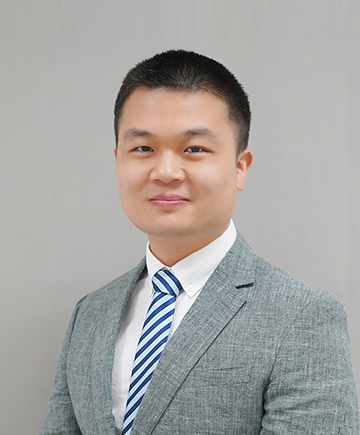Study



OFFICE PHONE
020-87111256
OFFICE
C2-b402 (Guangzhou International Campus)
roywangyu@scut.edu.cn
WEBSITE/LAB
Professor Yu Wang joined the faculty of South China University of Technology (SCUT) in 2021, where he established the Emergent Materials and Intelligent TEM (EMIT) Lab. Prior to this appointment, he served as a postdoctoral researcher in the Department of Materials Science and Engineering at the University of California, Berkeley, for four years. Professor Wang earned his B.S. in Chemistry from Nanjing University in 2009 and his Ph.D. in Physical Chemistry from Xiamen University in 2016. He currently holds a joint professorship in the School of Emergent Soft Matter and the Center for Electron Microscopy at SCUT. Professor Wang has authored or co-authored over 30 peer-reviewed publications in top-tier journals. His contributions to emergent materials and advanced characterization techniques earned him recognition as a Zhujiang Talented Scholar in 2021.
Emergent Materials and Intelligent TEM (EMIT) Lab aims to advance the synthesis, characterization, and analysis of emergent functional materials via developing AI-driven combinational toolkit. Their research focuses on three interconnected areas:
1. Intelligent Synthesis: Development of automated robotic systems for high-throughput chemical synthesis and sample preparation. AI-guided optimization of synthetic pathways enables real-time refinement based on structural and functional data.
2. Intelligent Characterization: Innovation in transmission electron microscopy (TEM), including liquid-cell TEM hardware and machine learning algorithms for in situ and 4D-EM data analysis. These tools reveal atomic-scale structure-property relationships critical to material design.
3. Artificial Intelligence: Deployment of AI for hierarchical material design, property prediction, and automated analysis of complex datasets from high-throughput and in situ experiments.
2021
Zhujiang Talented Scholar
Y. Jiang#, W. Chang#, Z. Li#, X. Zhou, P. Zhang, X. Huang, X. Pan, Z. He, Y. Wang*, Z. Tian, Synergistic Aggregation-Induced Emissive Linkers in Metal-Organic Frameworks for Ultrasensitive and Quantitative Visual Sensing. J. Am. Chem. Soc. Au, 2025, jacsau.5c00092.
C. Chen, L. Cao, Y. Liu, Z. Li, Z. Li, G. Zhou, D. Zhang*, X. Huang, Y. Wang*, G. Li, L. Liu, Y. Yuan, Y. Zhang, Q. Wang, Y. Chen, Z. Shi, Q. Fang, Z. Huang*, Z. Lai*, and Y. Han*, Investigating a Seemingly Simple Imine-Linked Covalent Organic Framework Structure. J. Am. Chem. Soc., 2024, 146, 35504.
Y. Meng, M. Wang, J. Wang, X. Huang, X. Zhou, M. Sajid, Z. Xie, R. Luo, Z. Zhu, Z. Zhang, N. Khan, Y. Wang*, Z. Li*, and W. Chen*, Robust bilayer solid electrolyte interphase for Zn electrode with high utilization and efficiency. Nat. Commun., 2024, 15, 8431.
Y. Wang,# Z. Song,# J. Wan, S. Betzler, Y. Xie, C. Ophus, K. Bustillo, P. Ercius, L. Wang, and H. Zheng∗, Strong structural and electronic coupling in metavalent PbS moiré superlattices. J. Am. Chem. Soc., 2022, 144, 23474.
Z. Song,# Y. Wang,# H. Zheng, P. Narang,* and L. Wang*, Deep quantum-dot arrays in moiré superlattices of non-van der Waals materials. J. Am. Chem. Soc., 2022, 144, 14657.
Undergraduate courses:
Introduction to AI for Chemistry and Materials Science
Research paper writing and scientific illustration
Graduate courses:
Scientific writing and Research Integrity.